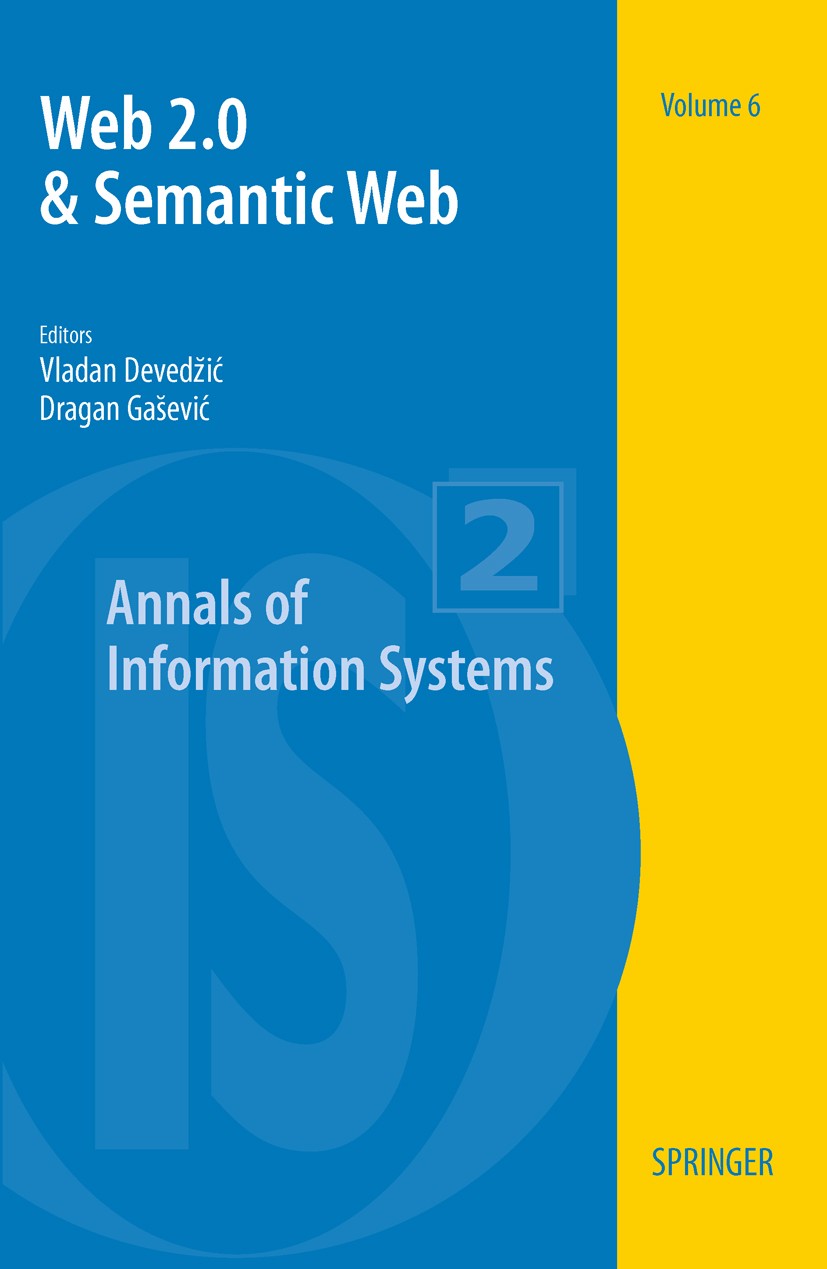| 书目名称 | Web 2.0 & Semantic Web | | 编辑 | Vladan Devedžić,Dragan Gaševic | | 视频video | http://file.papertrans.cn/1022/1021440/1021440.mp4 | | 概述 | Presents the latest research on both Semantic Web and Web 2.0.The first consideration of using other technologies to further Web 2.0 and Semantic Web growth.The first volume to look at matching Semant | | 丛书名称 | Annals of Information Systems | | 图书封面 |  | | 描述 | According to the W3C Semantic Web Activity [1]: The Semantic Web provides a common framework that allows data to be shared and reused across appli- tion, enterprise, and community boundaries. This statement clearly explains that the Semantic Web is about data sharing. Currently, the Web uses hyperlinks to connect Web pages. The Semantic Web goes beyond that and focuses on data and envisions the creation of the web of data. On the Semantic Web, anyone can say anything about any resource on the Web. This is fully based on the concept of semantic - notations, where each resource on the Web can have an assigned meaning. This is done through the use of ontologies as a formal and explicit representation of domain concepts and their relationships [2]. Ontologies are formally based on description logics. This enables agents and applications to reason over the data when searching the Web, which has not previously been possible. Web 2. 0 has gradually evolved from letting the Web users play a more active role. Unlike the initial version of the Web, where the users mainly “consumed” content, users are now offered easy-to-use services for content production and publication. Mashups, blogs, wik | | 出版日期 | Book 2009 | | 关键词 | Internet; Semantic web; Web 2; 0; data mining; model-driven engineering; modeling; ontology; service-oriente | | 版次 | 1 | | doi | https://doi.org/10.1007/978-1-4419-1219-0 | | isbn_softcover | 978-1-4419-1218-3 | | isbn_ebook | 978-1-4419-1219-0Series ISSN 1934-3221 Series E-ISSN 1934-3213 | | issn_series | 1934-3221 | | copyright | Springer-Verlag US 2009 |
The information of publication is updating

|
|
 |Archiver|手机版|小黑屋|
派博传思国际
( 京公网安备110108008328)
GMT+8, 2025-12-19 21:42
|Archiver|手机版|小黑屋|
派博传思国际
( 京公网安备110108008328)
GMT+8, 2025-12-19 21:42


